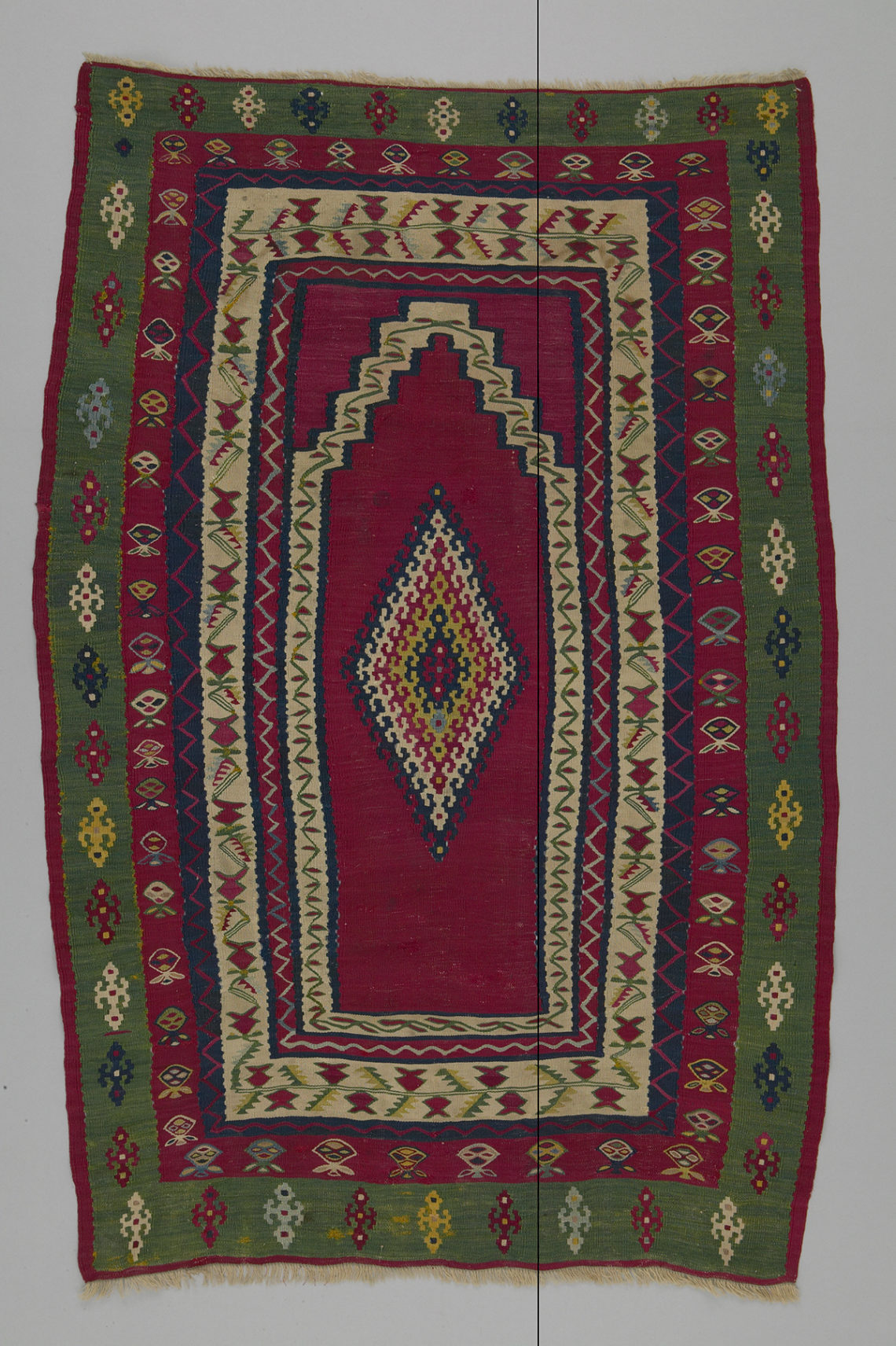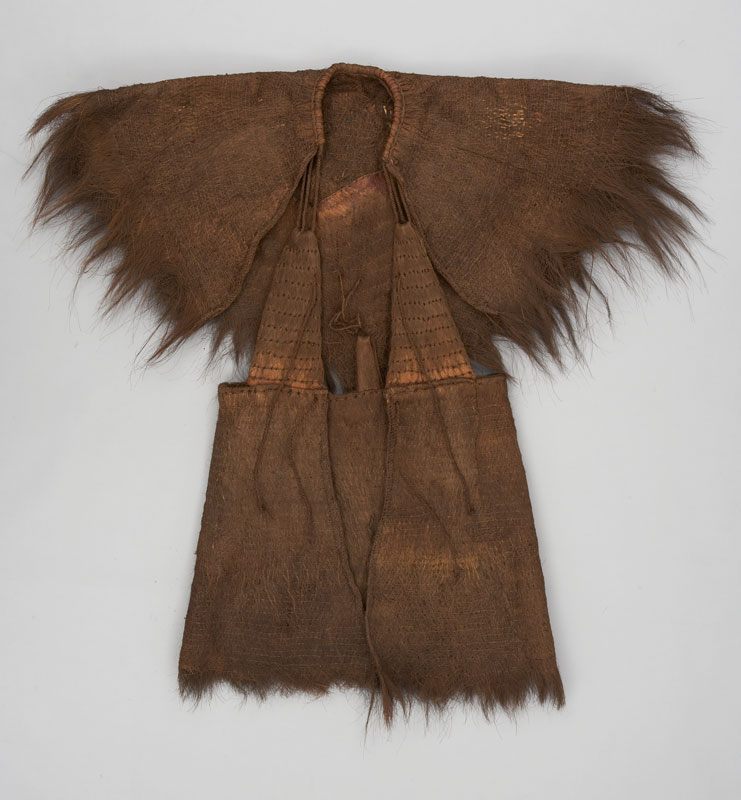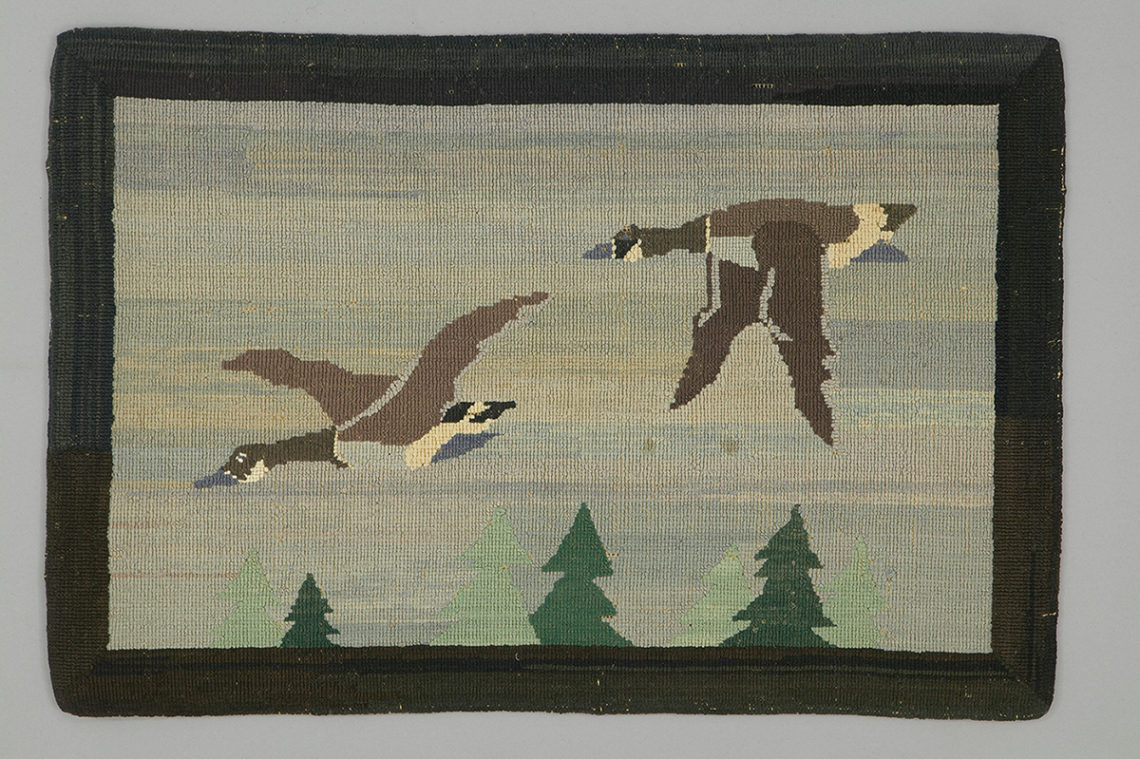Funerary Mask, T90.0124
Our Object of the Week is a funerary mask known as a ya-ko-ko-su-ti-ro, worn by Tukano men from Brazil.
The large, cone-shaped masks cover the wearer’s body to the knees. They are made throughout the tropical lowlands of South America using one of the oldest methods of textile production: the beating and decorating of bark cloth. This technique is practiced in most tropical regions, but is especially important in the eastern half of South America, where there is no indigenous loom technology. The bark comes from the Tururi tree and is then painted with vegetable dyes. The faces painted onto the masks may represent a forest spirit or another human-shaped creature. The top, bottom and small sleeves are stiffened with cane hoops, and palm fringes are tied to the bottom hoop to conceal the wearer.
Funerary masks are worn to represent the inhabitants of the spirit world during mourning ceremonies for the recently deceased (called óyne, or weeping). While wearing the masks, men dance, sing and mime animal or spirit behaviour. At the end of the ceremony, mourners burn the bark-cloth masks to drive away the soul of the deceased.


